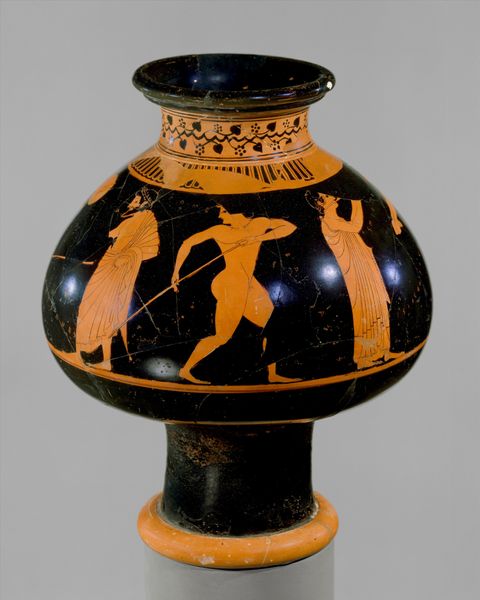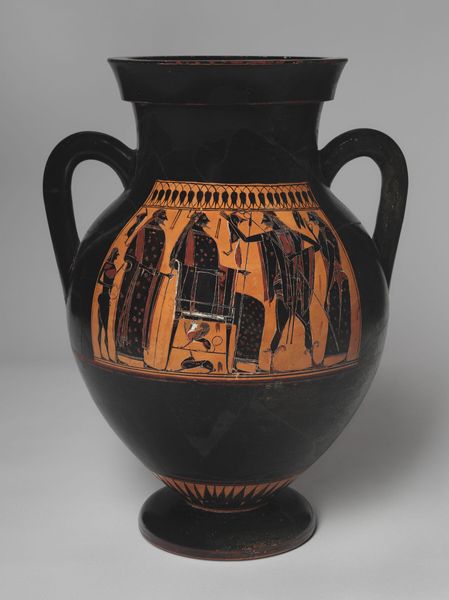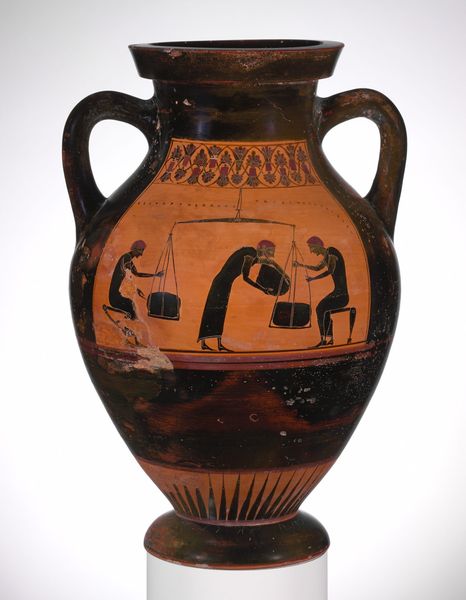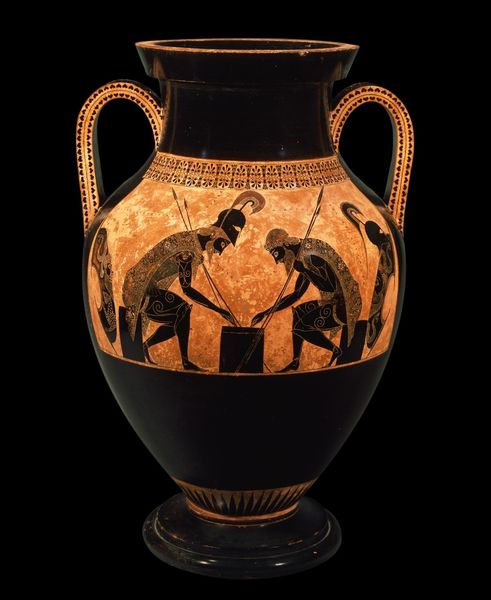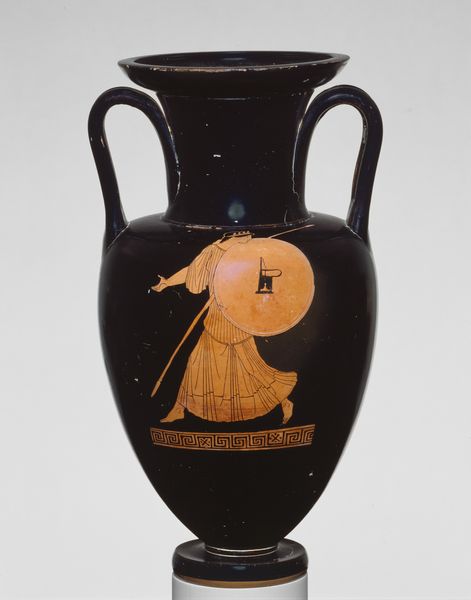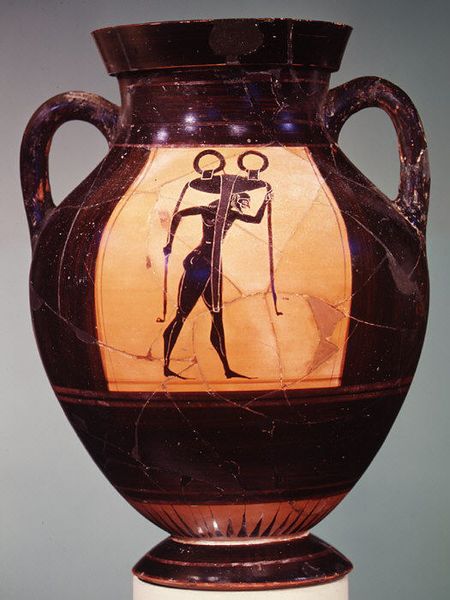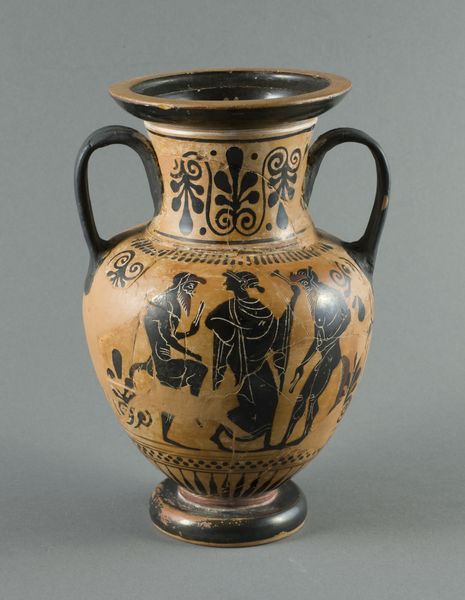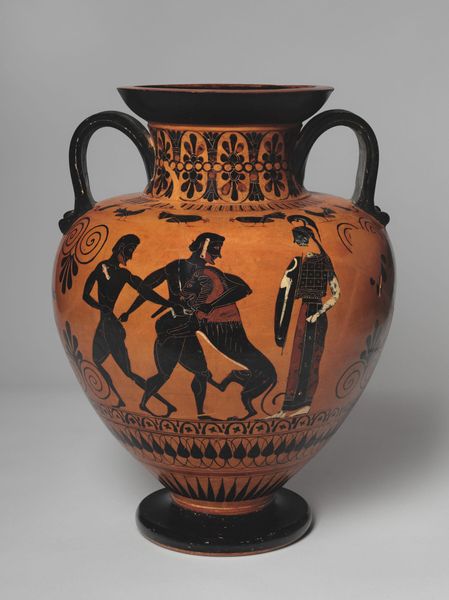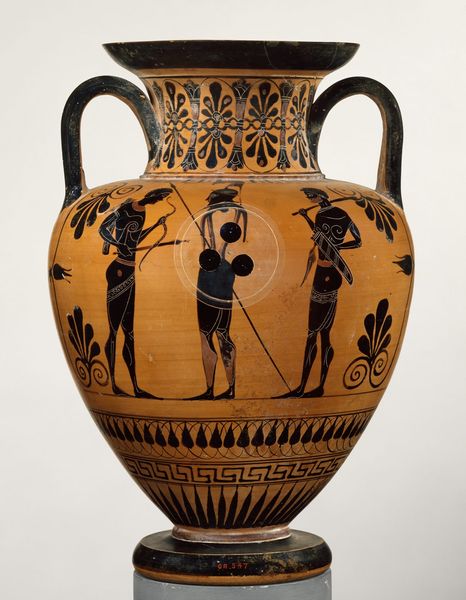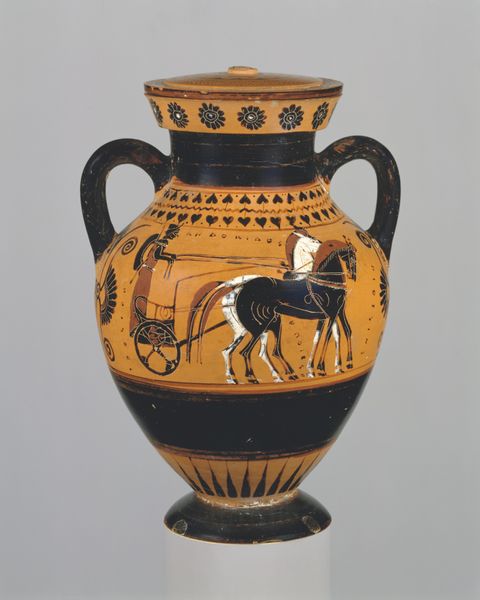
ceramic, sculpture
#
sculpture
#
greek-and-roman-art
#
landscape
#
ceramic
#
figuration
#
ancient-mediterranean
#
sculpture
#
ceramic
Copyright: Public domain
Editor: So here we have a ceramic jug, titled "Terracotta Oinochoe, Chous," dating back to 420 BC. It's currently housed in the Metropolitan Museum of Art. I'm immediately drawn to the stark contrast between the dark background and the lighter figures. It’s like a freeze-frame of an ancient narrative. What can you tell me about it? Curator: Well, looking at it from a materialist perspective, we should consider the context of its production and use. This isn’t just a pretty object; it was made by someone, for someone, to serve a purpose in ancient society. What can the clay itself, the process of firing it, and the depicted scenes tell us about Athenian life at this time? Editor: So, beyond the figures, you’re interested in the “how” and the “why” of its existence. What does that production process tell us, then? Curator: The labor involved is significant. Mining the clay, shaping it on a wheel, firing it perfectly…this requires skilled craftsmanship and suggests a complex division of labor. Notice the imagery, the theatrical scene, the use of added color now faded away... What social rituals or beliefs are being reflected and reinforced through its use? This wasn't 'art for art's sake'. Editor: Right, it’s not just decorative. Thinking about it, a jug like this would be used during symposiums, right? So the image is directly related to its function. Curator: Exactly. It gives insight into the lives of everyday ancient Greeks and how material objects played a critical role in their lived experiences. Even its current location in the Met changes its meaning. From everyday object to treasured artifact, it has travelled through time as well as function. What can it tell us now about then? Editor: Fascinating. I’m now seeing the jug not just as a static image, but as a product of labor and a tool in shaping social experience. It really changes how I perceive art from this period. Curator: And that, hopefully, expands our appreciation beyond aesthetics to encompass the entire process of art-making and the social context in which it operates. It certainly opens up more avenues for exploration.
Comments
No comments
Be the first to comment and join the conversation on the ultimate creative platform.

